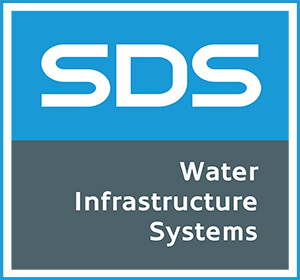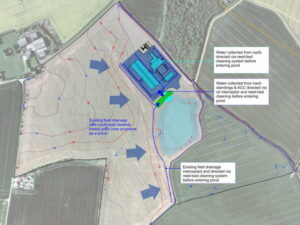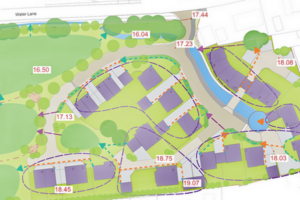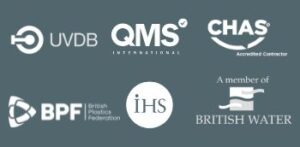Agriculture’s requirement for a more robust and resilient water supply.
Integrated Storm Water Management is an ever-increasing requirement as the effects of climate change take hold. One such mechanism is to slow the flow of water, allowing the downstream water more time to process the increasing water volume from the storm event, thereby reducing the potential for flooding. Everyone, including farmers, can also reap the Sustainable Drainage Systems (SuDS) benefit of drought resilience, by harvesting rainfall for later use.
The government has introduced a Countryside Stewardship grant system.
Countryside Stewardship scheme opens for 2023 agreements – GOV.UK (www.gov.uk)
Countryside Stewardship: get funding to protect and improve the land you manage – GOV.UK (www.gov.uk)
Their aim is to help promote water efficiencies in the agriculture sector. Some of the schemes are quite rewarding when coupled together, covering most of the cost of deployment, installation and product supply cost, especially when it’s proven to have a positive effect on downstream flooding and influences the amount of water abstracted, making the supply of water more resilient.
Climate change is expected to get worse and the UK will see more extreme weather events; acting now will have greater long-term benefits.
How you optimise the existing drainage network is getting SMART.
Nature provides a lot of the solutions with green vegetative SuDS that help absorb or capture, retain and use the water, generating habitats for wildlife and insects that help with pollination, while also filtering out the day-to-day pollution we see from our surface water runoff. No one solution can cope on its own, it needs a holistic catchment approach to both flooding and drought, making our drainage network more robust and the supply of water more resilient.
Farmers and agriculture in general require a lot of water for their plants and livestock. The effects of climate change are making this more challenging with a direct implication for crop yields. The ability to abstract water is now under scrutiny with increased charges, phased charges at times of drought, when farmers are in most need of the water, making it harder and more costly to provide both crops and livestock.
Rainwater harvesting is simple. Rainwater is captured from any roof area such as from barns and sheds and reused. At first it seems too simple and perhaps not enough water: of course, it’s relative to the onsite roof space and the farm’s geographical location, which will determine how much water can be captured and an appropriate tank size is required.
Where it starts to get clever is with the introduction of SMART technology, that facilitates a symbiotic relationship with the local catchment and uses a predictive weather forecast via mobile phone service, such as SDS Intellistorm® – SDS (sdslimited.com), to allow the local programmed device to autonomously manage the water supply.
So, a farmer might install a rain butt, rainwater harvesting tank, or even a geocellular hybrid tank with 95% void ratio which might use a storage tank located under a pond or other above-ground water feature to limit the pond’s footprint but deliver a large storage capacity. This same concept could be applied in the format of a trench around a field which offers a lot of design flexibility and most importantly a very large storage facility enabling the water to be captured and slowly released back into the environment or reused (as preferred) for irrigation and livestock. Such a scheme limits the amount of water abstracted, reducing the ever-increasing cost, reducing the amount of water that discharges to the downstream network, and slowing the flow of water, thereby mitigating flooding, elevating the pressure on the ageing infrastructure and limiting any CSO spillages downstream. This reduced abstraction means that the flow of the rivers is retained, helping to dilute the pollutants and mobilising silts that would have otherwise built up on the riverbeds starving the river of oxygen as they decay and kill the invertebrates that are the food for so many of the other species within the river ecosystem.
SMART becomes the fifth pillar of SuDS.
The beauty of the inclusion of SMART technology and existing proprietary products is that they can be integrated into natural solutions and increase their performance whilst making the valuable asset of water available for reuse, establishing and retaining habitats and bringing many advantages and benefits to the local catchment. The other key benefit is that they offer massive design options so can be deployed as a rain tank, or an on-site reservoir or a combination of both, depending on space and requirements. Furthermore, things like soil moisture sensors can be included into drip irrigation methods to really optimise the amount of water consumed making a real difference to farmers’ water resilience.
ROI: Return on investment is key.
The cost of these devices is of course a major factor in any decision and the return on investment is hard to identify, as one year we could have plenty of sunshine and rainfall the next. It is likely, however, that we will see more drought and the effects this has on a poor yield and reduced sales revenue.






